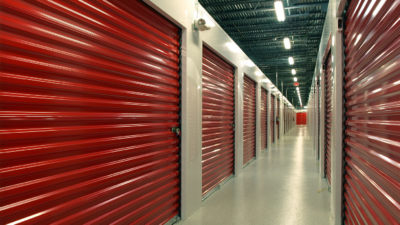Occupier activity across the Unites States continues to be robust, particularly in bulk industrial space 100,000 square feet (SF) and larger. In Q1 2019, 532 industrial (warehouse, manufacturing and flex) new leases and 136 user sale transactions signed in spaces 100,000 SF and larger, which totaled 154 million square feet (MSF) when combined. This total was on par with the same quarter a year ago. The average size of a bulk transaction was 268,000 square feet, which was just slightly higher than the 264,000 square foot average this time last year.

While e-commerce only occupiers like Amazon continue to get the press, they made up only 10% of the transactions signed the past twelve months, which is in line with the percentage of total retail sales e-commerce accounts for. The top spot remains 3PL’s for the thirteenth consecutive quarter, signing 42 million square feet of new transactions, accounting for 28% of the total transactions signed. 3PL’s who offer logistics and warehousing services for retailers and wholesalers who choose to outsource, remain the top occupier of industrial space because of the sheer volume of companies who service every industry in the business. The top 3PL occupiers in first quarter were FedEx, NFI and DHL, who all signed over one million square feet of new transactions.

E-Commerce occupiers continue to need buildings much larger than other occupier types, as the average e-commerce transaction the past year totaled 403,000 SF. This is nearly double the overall average transaction size for a bulk industrial building, but much lower than the 496,000 square foot average in 2018 due to a decline in transactions over one million square feet in first quarter. For the 18th consecutive quarter, Amazon was the top e-commerce and overall occupier of industrial space, signing transactions totaling nearly 6 million square feet. Best Buy also continues to expand its e-commerce distribution capabilities, signing 1.2 million square feet of new deals.

For the third consecutive quarter, the Midwest beat out the Southeast as the top region of choice for bulk industrial occupiers, with 33% of the bulk transactions signed in the region. Both industrial and manufacturing occupiers continue to move into the market in droves because of the region’s pro-business climate and significant logistics advantages. The Southeast region is still doing well, as occupiers move into the region to support the growing population. At the time of this report, over 70 million people lived in the Southeast region, and this expected to grow by a nation-leading 7% over the next five years. The West region finished in 3rd thanks to continued strong demand in the Inland Empire, which remains one of the top markets in the country for bulk leasing activity.

Company Type Description:
- Construction, Improvement and Home Repair – Warehousing and distribution of materials used in residential and commercial construction, improvements and repair. Could contain some e-commerce components.
- Data Centers/Tech/Engineering – The use of industrial space for data centers and non-pharmaceutical R&D purposes.
- E-Commerce Only – Warehousing and distribution of product that is ordered online and shipped directly to the end consumer only.
- Food, Beverage and Pet Supply – Manufacturing, warehousing and/or distribution of food and beverage related products. Could contain some e-commerce or manufacturing components.
- Furniture and Appliances – Warehousing and distribution of retail and/or wholesale furniture and appliance products. Could contain some e-commerce and or manufacturing components.
- General Retail and Wholesale – The warehousing and distribution of retail and/or wholesale products not listed in any of the other categories. Could contain some e-commerce or manufacturing components.
- Manufacturing – Industrial space used for manufacturing and/or storage of raw materials and equipment used in the manufacturing of non-automobile related products.
- Motor Vehicles, Tires, and Parts – The warehousing, manufacturing and/or distribution of motor vehicles, tires and related parts and materials.
- Third Party Logistics and Packaging – Third party logistics (3PL) and packaging of a wide variety of products. Could contain some e-commerce components.

 Colliers Insights Team
Colliers Insights Team
 Craig Hurvitz
Craig Hurvitz
 Aaron Jodka
Aaron Jodka